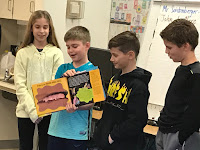Iphones, Ipads, Kindles, TVs, laptops...Digital screens are pervasive in our children's world. What is a parent to do? What makes sense and is reasonable? What do we do in this time of distance learning and Zoom meetups?
First, we need to consider the research. Most experts in child development suggest limiting screen time to zero for children under two and less than one hour for children two - five years old. School age children may not need a hard and fast rule, but remember less is usually better.
A NIH study of 11,00 students age nine to ten set out to determine what, if any, effect screen time had on children's brain development. After studying the data, scientists came away with two important take aways. First, MRI scans of children who spend a significant amount of time using digital devices (seven hours or more) show remarkable differences in the brains. Secondly, children who spent a mere two hours or more on screens exhibited lower scores on thinking and language tests.
A second study completed by the University of Calgary drew concluded that "Excessive screen time is linked to preschool learning delays." Excessive screen time in children five and less is more than one hour a day. In addition these young children showed delayed gross motor development.
When children are using screens we tend to think of the benefits - increased learning, reading, eye-hand coordination, building background knowledge, etc. All positive things no doubt. However, we also need to think of what our children are losing when they overuse digital devices. They lose the opportunity for real time interaction with adults and peers, the ability to read social cues, interaction with the natural world, and learning how to self calm and deal with emotions.
So, to revisit our initial question, what is a parent to do.
- Limit screen time. make "Less is more" your mantra. Zero screen time for children less than two, and less than one hour for children 2-5
- Be purposeful in your family screen time. Develop a plan for how much screen time works for your family taking into account the above guidelines
- Realize that you are the model for your children. Be aware of having a TV on for background noise. Try to limit your screen time when children are around
- When children are using screen media sit with them and participate.
Finally, work to counteract the negatives associated with screen time. Interact with your children in myriad language based ways. Read aloud from multiple genres of text. Sing and learn rhymes together. Ask questions and encourage your child to do the same. Get outdoors often explore the natural world.
What strategies have worked in your families? What challenges do you still face? Share your successes and challenges so we can help each other.
Sources for further reading:
https://medlineplus.gov/ency/patientinstructions/000355.htm
https://www.mayoclinic.org/healthy-lifestyle/childrens-health/in-depth/screen-time/art-20047952























